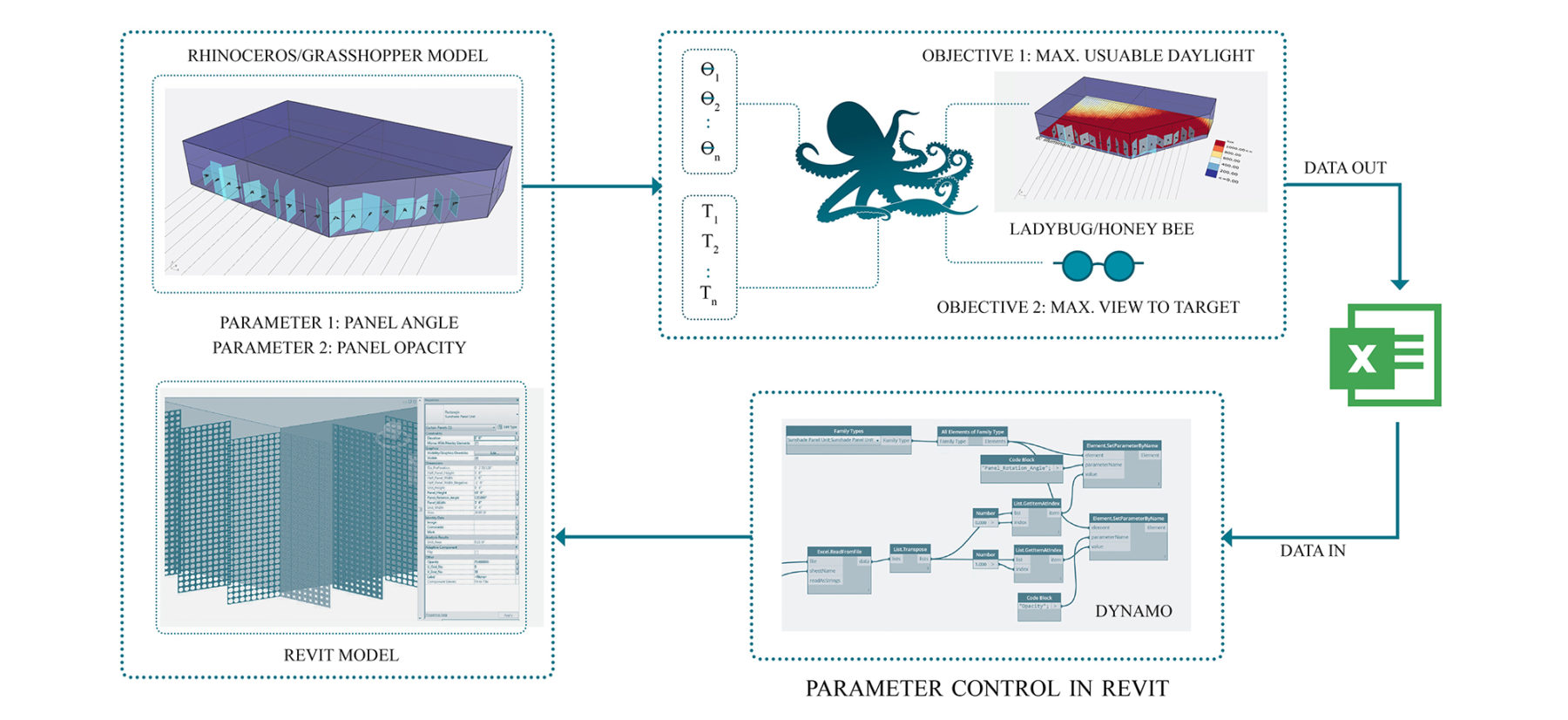This is the third post in the TRG series, which focuses on one of Sasaki’s in-house research and resource arms, the Technical Resource Group. Read more here.
A research paper by Bomin Kim, AIA CPHC, and Youngjin Lee, AIA, LEED® AP, has been published in an international blind peer-review journal, Advances in Computational Design. The paper, “Genetic Algorithms for Balancing Multiple Variables in Design Practice,” focuses on computational practices that allow designers to consider multiple variables at once. Lee and Kim originally presented their research at The International Initiative for Sustainable Built Environments (iiSBE 16) and AIA Conference on Architecture (AIA ’17).
“Youngjin and I found this topic particularly important because it develops a method of applying academic rigor to our practice, and increases digital literacy without isolating sustainability as a disparate concept,” says Kim of their research. “It also highlights the importance of the designers’ active role in parametric design, requiring intuition that computers and technology alone cannot achieve.”
This research was born of a productive collaboration between TRG, Sasaki Strategies, and our sustainability experts to advance our architectural practice. Specifically, Kim and Lee’s research introduces a process for Multi-objective Optimization Framework (MOF), which allows a designer to consider multiple constricting or ideal parameters, as opposed to just one. The MOF is a BIM-integrated and simulation-based parametric workflow capable of optimizing the configuration of building components by using performance and non-performance driven measures to satisfy requirements including build programs, climate-based daylighting, occupant’s experience, construction cost and so on. In a departure from other R+D solutions in this space, MOF can be applied to any stage of the design.
Read the full article here.
Read more here about TRG’s philosophy in the first post of the series.

